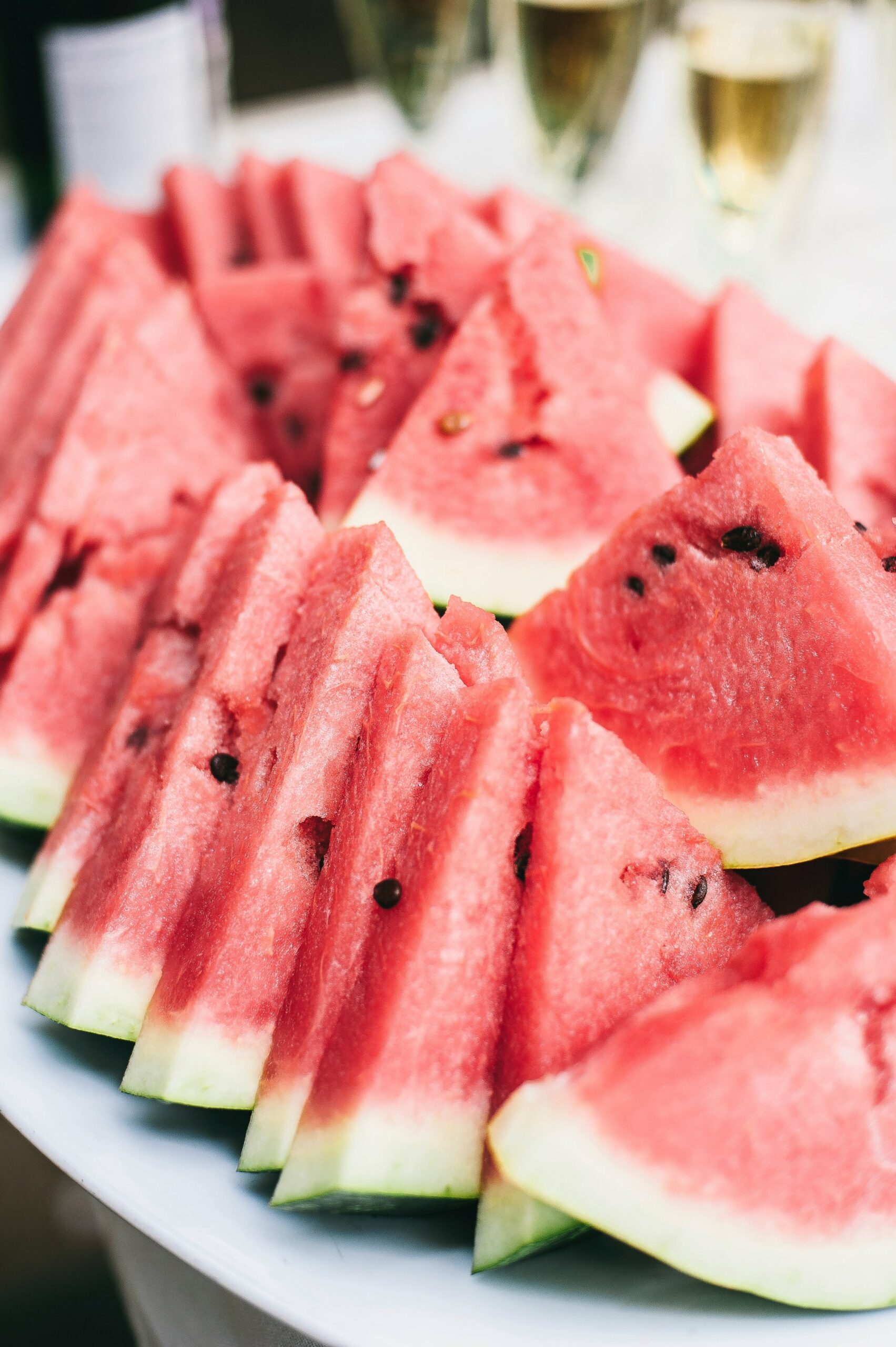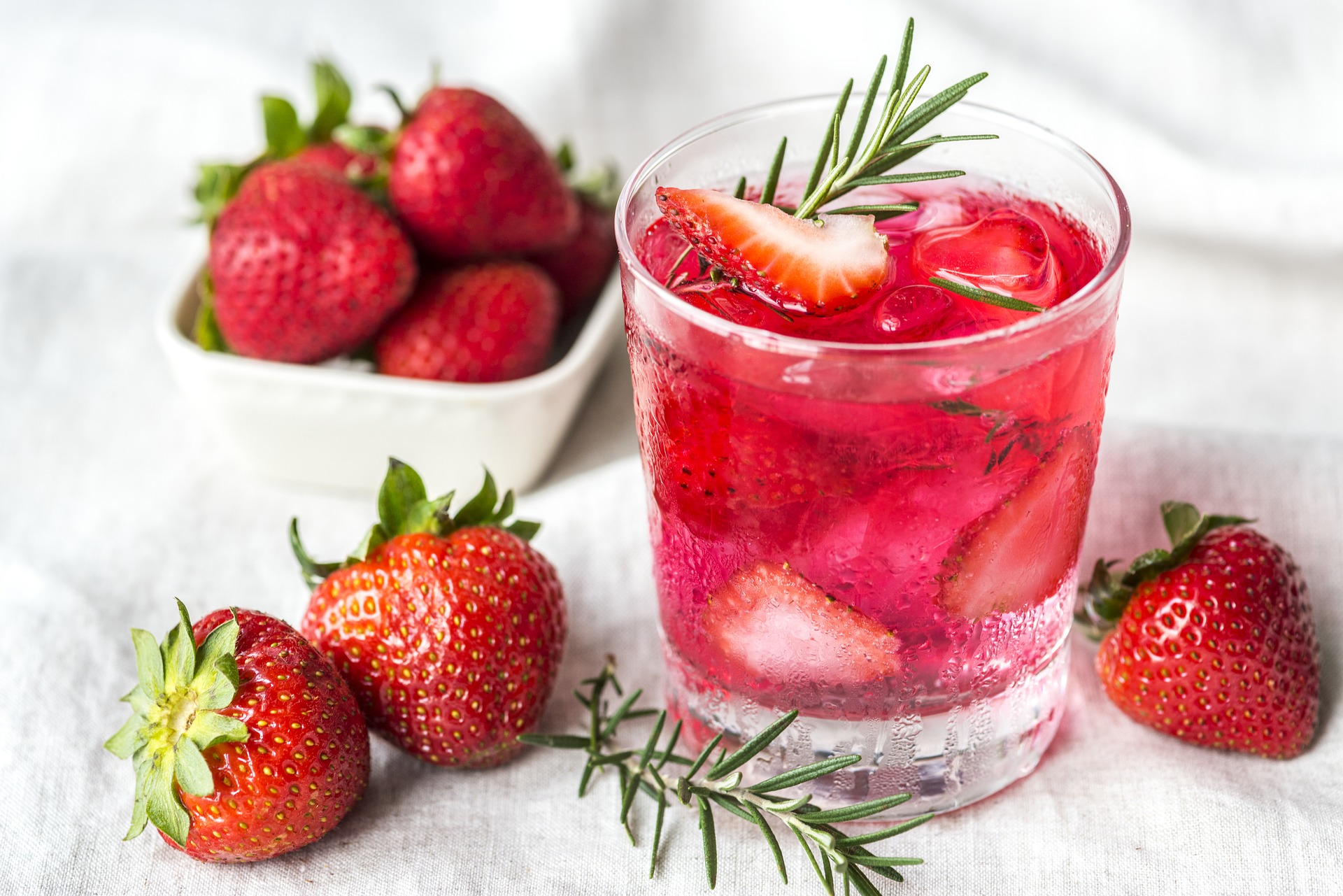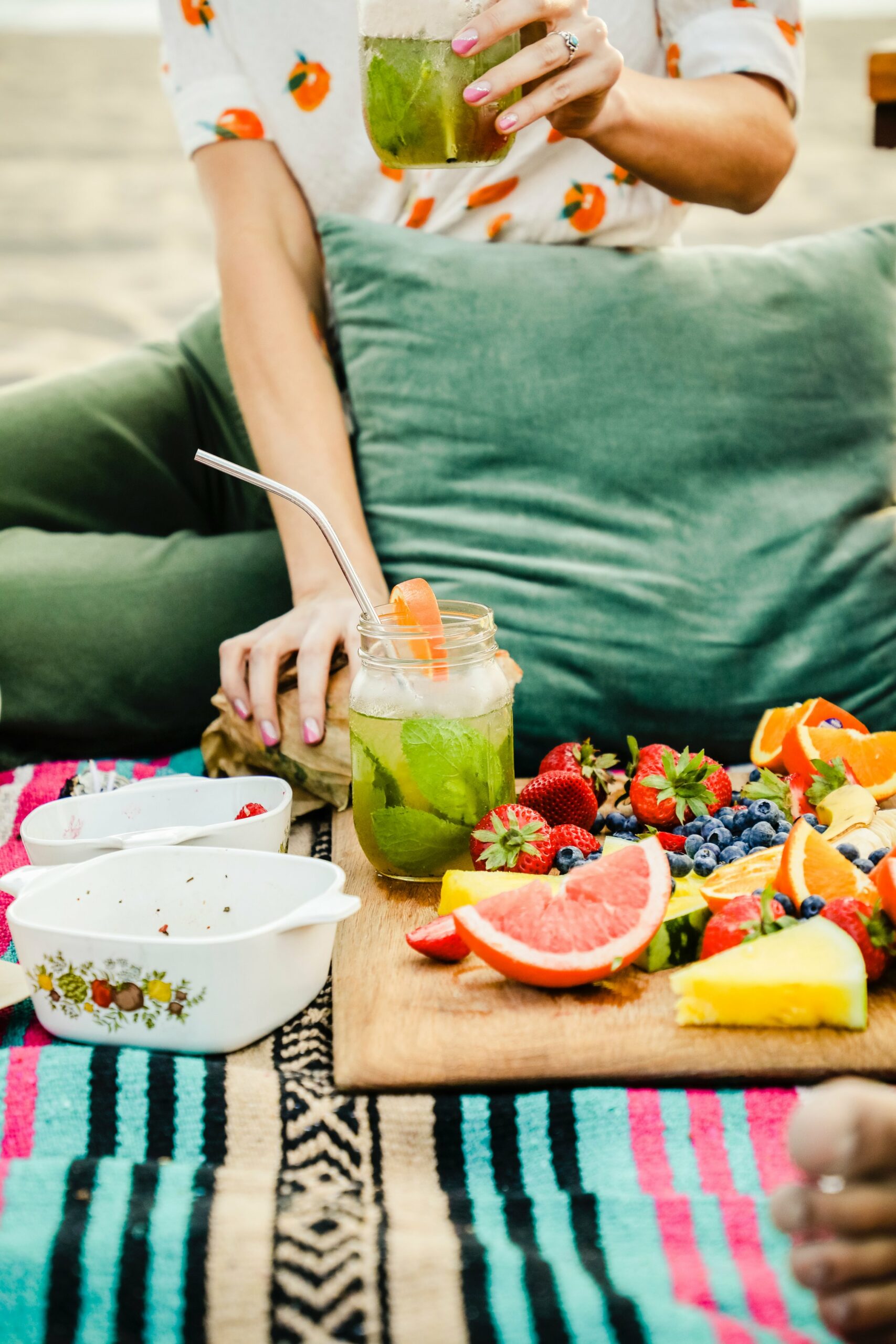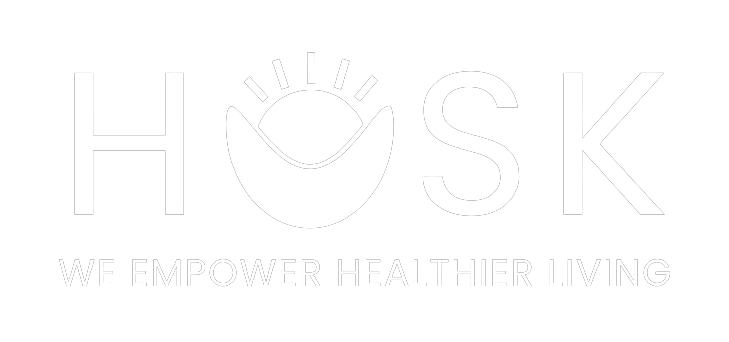
8 Dietitian Approved Tips to Enjoy a Healthy Picnic and BBQ Season
With the summer upon us, it is time for outside events, including picnics and BBQs. If you are looking for ways to stay healthy while enjoying yourself this summer, look no further! There are ways to stay healthy and within your calorie needs for the day, while still enjoying the foods you want to eat. Check out these dietitian-approved tips to enjoy your summer festivities.
1. Grill up a protein, aiming for lean meat, fish, or veggie burgers
Grill lean cuts of meat, such as 99% fat-free turkey burgers or lean beef burgers, skinless chicken breast, veggie burgers, portobello mushrooms, a piece of fish like tuna steak, or make grilled shrimp skewers. Serve burgers in a whole wheat bun, thin whole wheat flat bread, whole wheat pita, or go bun-less and have over a salad with whole wheat crackers or pasta/potato salads on the side. Remember to keep portions in mind with a common portion being about 1 small lean burger (2-3 oz) or 1 small chicken breast (3 oz).
2. Pair your protein with fruits and vegetables.
Cut up a delicious fruit salad, such as peaches, pineapples, and berries to have on the side or to snack on throughout the BBQ. You can pick up some fresh vegetables from the farmers market, such as cucumbers, tomatoes, red/yellow/green peppers, and onion to make a delicious chopped salad seasoned with lemon juice and olive oil; make a salad with fresh mozzarella, tomatoes, and basil over mixed greens with a vinaigrette dressing; take your favorite greens, such as kale, chopped apples, tomatoes, cucumbers, and a chopped pepper on top to have on the side; or try a tasty bean salad with black beans, grilled corn, cilantro, diced peppers, onions, and cucumbers in a vinaigrette dressing. You can also grill up your favorite vegetables, such as making skewers of red peppers, zucchini, squash, mushrooms, and eggplant. The sky’s the limit for the amount of fresh vegetables you can throw into a salad in the summer!

3. Try other dressings on pasta and potato salads, and keep portions of starches and starchy vegetables in mind.
Try adding vinaigrettes, olive oil, lemon, and spices to salads, pasta salads, and potato salads instead of creamy dressings. If you like creamy dressing, try making a homemade dressing using plain Greek yogurt, avocado, lime, and cilantro.
Make sure to keep portions in mind. ½ cup pasta, rice, peas, and corn, 1 slice of bread, ½ hamburger bun, or a computer mouse sized potato is one serving. If you have ½ a cup of pasta salad, have with ½ of a hamburger bun, or opt for the whole bun and fill your plate with fruits and vegetables for sides. Also, try leaving the skin on potatoes when making a salad or eating the entire potato rather than removing the skin, and have whole wheat bread and whole wheat sandwich buns for added fiber. Remember, the recommendation is to have half of your grains consist of whole grains throughout the day, such as a whole wheat bun, brown rice, or whole wheat pasta.
4. For dessert, try grilling fruit.
Slice strawberries and marinate in balsamic vinegar with mint, or make a fresh fruit salad with a variety of berries. Another way to serve up a delicious fruit salad is by carving out a watermelon or grilling watermelon for 30 seconds on each side. Slice peaches in half and cook on the grill, or make fruit kabobs using pineapples and peaches and grill until they have a slight golden color and are hot.
5. Make sure to rehydrate smart.
Limit alcoholic beverages, sodas, and juices, and instead opt for water, seltzer, and flavored water. Moderate alcohol consumption is 2 drinks per day for men, and 1 drink per day for women per the Dietary Guidelines for Americans. Also, limit or avoid soda and juice. Added sugars should be limited to no more than 100 calories or 6 teaspoons per day for women, and 150 calories or 9 teaspoons per day for men, so aiming to avoid or limit these sugary beverages will help to not go over this amount per day. Opt to instead have water and seltzer, and for flavor add a mixture of your favorite fruits and vegetables, such as oranges, berries, watermelon, cucumbers, mint, etc; make homemade iced tea; or make fresh lemonade by adding lemons to water. This will spice up your drink with a little flavor!

6. Make sure to keep temperature control in mind.
The “Danger Zone” is between 40 and 140° F, so make sure not to let the food remain in this temperature range for more than 2 hours or 1 hour when temperatures are above 90° F.
Keep hot foods at or above 140° F. Make sure to not leave these foods out for more than 2 hours or 1 hour with a temperature above 90° F.
Keep cold perishable foods at 40° F or below in a cooler until being served. Make sure to keep the cooler closed. Do not keep cold foods out for longer than 2 hours or 1 hour if temperatures are above 90° F.
Make sure to discard cold and hot foods that are left out for longer than 2 hours.
Cook foods to the proper internal temperature, using a thermometer to check. Temperature to cook meat, fish, eggs, and other casseroles and dishes to include:
Ground beef and pork to 160° F
Ground turkey and chicken to 165° F
Fresh beef, pork, and veal to 145° F with a 3 minute rest period
Chicken, turkey, duck, and stuffing to 165° F
Fresh ham to 160° F
Eggs until the yolk and whites are firm or egg dishes to 160° F
Fin fish until 145° F, or flesh is opaque and separates easily with a fork
Seafood such as shrimp and lobster until the flesh is opaque and pearly; clams and oysters until the shells open; and scallops until milky white/opaque and firm
Leftovers and casseroles to 165° F
Also, make sure to thoroughly wash produce and prevent cross-contamination by keeping perishables separate from drinks, and raw foods like raw chicken thoroughly wrapped.

7. Use mindful eating and a hunger scale.
Really enjoy the foods you are eating. Appreciate how the food looks, enjoy the smell, take a bite and observe the texture and flavor, really savor the flavors and take your time eating. Sometimes at all day events food is out and available to snack on. Use a hunger scale of 0 to 10, where 0 is starving and 10 is full, aiming for a 5 out of 6, where you are not stuffed, but comfortably full, and rate your hunger before going in for seconds or snacking. If you just want to snack on something, grab fruit salad, a little salad/vegetables, or have a glass of water.
8. Everything in moderation.
Make sure to have a good time! This is what BBQs and picnics are all about. Some days we might eat more than others or might have foods that may not be as nutritious. But, we have to get rid of these cravings by eating these foods once in a while. Be mindful of these moments, enjoy them, and move on.
Post written by Nicole Parello MS, RD, CDN
This information is intended for general advice and may not be applicable to everyone. Please speak to your on-site Registered Dietitian if you have specific questions or to find out what is best for your individual needs.
Sources
10 Tips: Make Half Your Grains Whole Grains. ChooseMyPlate.gov. 2019. Available at: https://www.choosemyplate.gov/10-tips-make-half-your-grains-whole-grains-0. Accessed June 2nd 2019.
All About the Protein Foods Group. Choosemyplate.gov. 2019. Available at: https://www.choosemyplate.gov/protein-foods. Accessed June 2nd, 2019.
Food Exchange Lists. National Heart, Lung, and Blood Institute; NIH. 2019. Available at: https://www.nhlbi.nih.gov/health/educational/lose_wt/eat/fd_exch.htm. Accessed June 6th, 2019.
Frequently Asked Questions- Alcohol and Public Health. 2019. Center for Disease Control and Prevention (CDC). Available at: https://www.cdc.gov/alcohol/faqs.htm. Accessed June 2nd 2019.
Gidus, Tara. Eating to Boost Energy. 2017. Academy of Nutrition and Dietetics, EatRight. Available at: https://www.eatright.org/food/nutrition/healthy-eating/eating-to-boost-energy. Accessed July 13th, 2019.
Handling Food Safely While Eating Outdoors. U.S. Food & Drug Administration. 2018. Available at: https://www.fda.gov/food/buy-store-serve-safe-food/handling-food-safely-while-eating-outdoors. Accessed May 31st, 2019.
Ragone, Regina. 6 Strategies for More Mindful Eating. 2017. Food&Nutrition.org. Available at: https://foodandnutrition.org/blogs/stone-soup/6-strategies-mindful-eating/. Accessed June 2nd, 2019
Sugar 101. 2019. American Heart Association. Available at: https://www.heart.org/en/healthy-living/healthy-eating/eat-smart/sugar/sugar-101. Accessed June 2nd 2019.
Tips for a Healthy Cookout. Academy of Nutrition and Dietetics, EatRight. 2018. Available at: https://www.eatright.org/food/planning-and-prep/cooking-tips-and-trends/tips-for-a-healthy-cookout
Sugar 101. 2019. American Heart Association. Available at:https://www.heart.org/en/healthy-living/healthy-eating/eat-smart/sugar/sugar-101. Accessed June 2nd 2019.
Mental Health
Movement
Marketplace
Nutrition
Physical Therapy
Rewards
HUSK Pro
Company
About
Contact
Press
Blog
© 2024 – HUSK | All rights reserved | Privacy Policy

